White stork, lucky
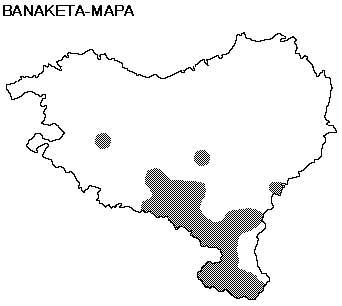
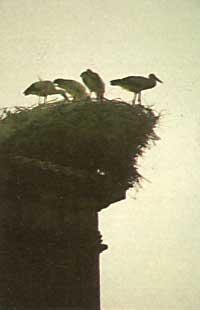
Asbestos has always been considered a sign of happiness. Protagonist of countless stories and legends, messenger of congratulations news and depositary of most of the human virtues has been considered in most of the cultures of our environment. Claudio Eliano (a.C.) IV-III. As indicated in his Animal History in the eighteenth century, an animal that expressed both love and loyalty and asbestos could hardly be found. This beautiful bird, in addition to taking care of its chickens, also assumed the responsibility of the aged parents and gave them food when they could not eat on their own.
But the sincerity of accounts and beliefs is not easy to imagine the reasons for man's special respect for this bird. It is true that asbestos has a clear tendency to live close to humans and has not prevented any kind of impediment to our life (it does not harm agricultural fields or livestock), and that its beauty is a pleasure for our eyes. However, it does not seem that these reasons are sufficiently effective in establishing human relations and with nature. At least as far as most other species are concerned.
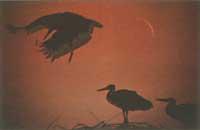
Amiamoko has been classified in the order of the cycloniform, along with the herons, amiltxos, asparagus and flamingos, and is characterized by its long extremities and long and sharp beak. It is a large bird (100-105 cm tall and 155-170 cm wide), in its luminous white plumage, the black feathers of the ends of the wings and the reddish legs and beak attract attention.
Like the rest of the cycloniform, asbestos is also a hunting bird whose prey is frogs, fish, reptiles and a lot of insects. Therefore, asbestos needs wet meadows, swamps, lakes or other wet means around the place of residence, if it gets food for it and for chickens it has to grow.
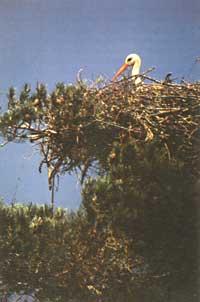
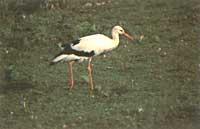
As a migratory bird, after spending the coldest months in the temperate south, it returns to the abandoned nests at the end of winter in the towers and higher constructions of our villages, with the aim of covering the new generations. The first amiamoko arrive towards February or, with the first work repairing and conditioning the giant nests formed by branches, old rags, mosses, herbs and other materials. The songs and dances of the time are very curious: although throughout the year they are very silent, at this time the amiamokos greet each other with shouts, while they swing slowly. This type of songs happen throughout the festival, both in males and females, when he comes to the nest to take the turn of chitaje, and he repeats it to his companion as a greeting of reverence or respect.
The 3-6 eggs placed in late March or early April need a chitage of about a month before the birth of amiamoko chickens. From this moment on, and especially during the first month, one of the parents will always be in the nest protecting their children, being obtaining food the work of the other parent. The male and female alternate in these works. When they are two months old, so in early summer, the chickens that have come forward will begin the first pre-flight exercises. At first they only shake the slopes, but soon jump over the nest and learn to keep them in the air in brief moments, falling back to the nest. In a few weeks, chickens will be able to go from behind their parents to the places where they get food to start training in hunting techniques. In mid-August, along with most of the birds, they will embark on a long journey to tropical Africa leaving our villages.
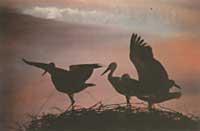
Amiamoko is a paleoarctic species that appears as nesting in North Africa, Central Asia, Turkestin, and East, Korea and Japan, and some European regions. The strongest populations in our continent are in the southeast and in the Iberian peninsula, being much rarer in the center.
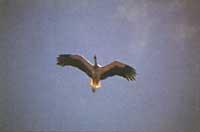
As for its habitat, it needs temperate Mediterranean climate regions, and as has been said, it has to have certain wet areas to obtain food (wet pastures, river margins or lagunares, etc. ). ). However, this type of environment has suffered a strong quantitative and qualitative regression in the whole of Europe in recent decades, which has meant a regression of those of asbestos. The same can be said of Euskal Herria. More than 30 nesting couples in Alava about 40 years ago. However, currently only one couple remains and their duration is also in doubt. In Navarra, for its part, in 1960 there were almost 80 breeding pairs and 24 years later only 44 remained, all located in the villages of the Ebro valley.
Apparently, and if we do not give solution, this lucky bird has already arrived time of misfortune. From the hand of man, of course.
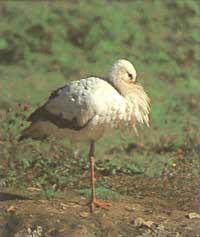
Technical information: Recent searches |
SPECIES: Ciconia Family: CICONIIDAE ORDER: CICLONIFORMES CLASS: BIRDS |
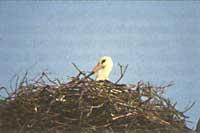
Buletina
Bidali zure helbide elektronikoa eta jaso asteroko buletina zure sarrera-ontzian











